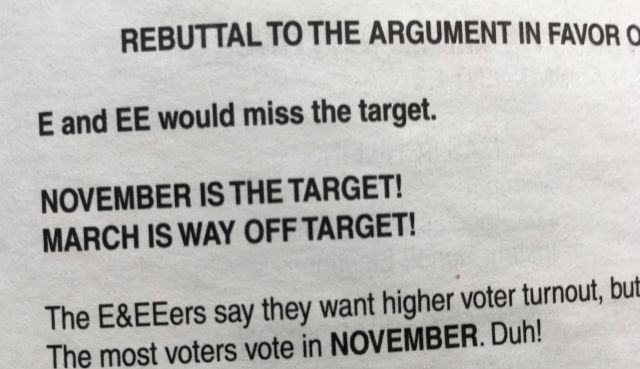Choose wisely
Please vote, of course.
On election day (Tues Nov 6), I’ll be working as a poll observer in Las Vegas for the Nevada State Democratic Party. Any attorney is eligible to volunteer. (I would’ve assumed the Nevada Republican Party also recruits poll observers. But in complete honesty, I couldn’t find a page for it. I leave it to those sufficiently motivated.)
The job of poll observers is not to sway voters. On the contrary—this kind of electioneering is forbidden by federal law. Rather, they act as eyes & ears to report nonpartisan problems—for instance, long lines or broken voting machines. Because many poll observers come from out of state, our training video emphasizes a critical point: the correct pronunciation of “Nevada” (vad rhymes with bad).
Perhaps it’s possible to hack elections through technological means. Though having been an observer at a chaotic poll location in Cincinnati in 2008, I’m persuaded that Hanlon’s Razor applies: never attribute to malice what can be adequately explained by carelessness.
Before then, I’ll mail in my California vote, using Butterick’s Razor to decide on propositions I can’t otherwise figure out: I vote against whichever side uses THE MOST TYPOGRAPHIC OVEREMPHASIS!! in their statement. (Below, the “duh!” puts it over the top.) This rule of thumb always puts me on the principled side of history.

I recently got two excellent new books about typography:
The Visual History of Type by Paul McNeil. This is a catalog of font history, not a compendium of practical tips. But what a history—a wonderful selection of examples from the 1400s to the present, beautifully presented and explained.
Dutch Type by Jan Middendorp. Not actually a new book, but a reprint of a 2004 release that sold out quickly and rarely appears for resale. Jan is also the author of Shaping Text, which has long been my top recommendation for those who exit Practical Typography wanting more.